SOLAR PANELS
A guide
Choosing the right solar panel can be overwhelming, so we've compiled this guide to help you make an informed decision. From monocrystalline to polycrystalline and beyond, we'll explore efficiency, cost, durability, performance in shading, and more.
Let's dive in and discover the perfect solar solution for your needs!
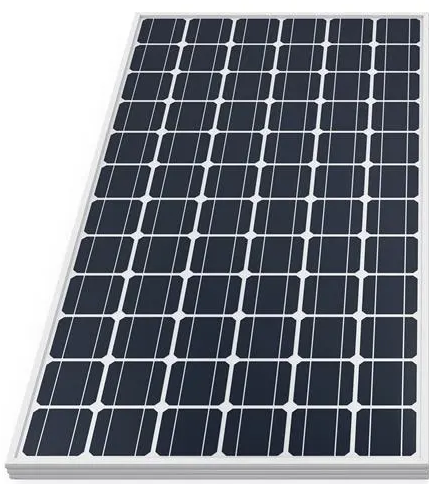
Mono-Crystalline
A monocrystalline solar panel is a type of photovoltaic panel made from a single crystal structure of silicon.
These panels are recognized for their high efficiency and sleek appearance. Due to their uniform composition, monocrystalline panels typically exhibit better performance in low-light conditions and have a longer lifespan compared to other types of solar panels.
Efficiency
Efficiency measures how effectively a solar panel converts sunlight into electricity. Monocrystalline panels generally have higher efficiency ratings, typically ranging from 16% to 22%, as their single-crystal structure allows for more efficient conversion of sunlight into electricity.
Cost
Cost is an important consideration when comparing different types of solar panels. Monocrystalline panels tend to be more expensive due to their higher efficiency and more complex manufacturing process, which involves growing single silicon crystals.
Durability and Longevity
Durability and longevity are crucial factors to consider when investing in solar panels. Monocrystalline panels are often considered more durable and longer-lasting than polycrystalline panels, as their single-crystal structure makes them less prone to degradation over time.
Performance in Shading and Partial Shading
Performance in shading and partial shading conditions is important, especially if your property experiences shading from trees, buildings, or other obstructions. Monocrystalline panels generally perform better in shading and partial shading conditions due to their higher efficiency. Each cell operates independently, minimizing the impact of shading on the overall system.
Looks
Monocrystalline panels typically have a sleeker, uniform black color and appearance, which some people find more visually appealing. They blend well with various architectural styles and are often preferred for residential installations.
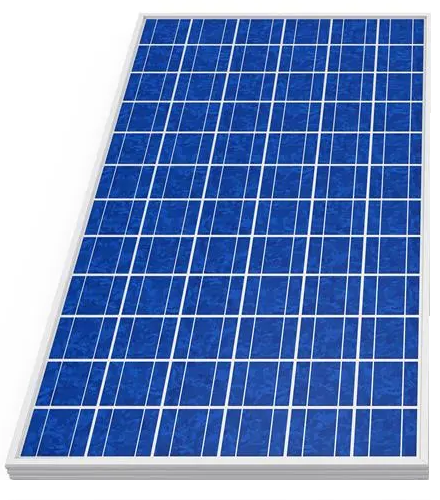
Poly-Crystalline
A polycrystalline solar panel is a type of photovoltaic panel made from multiple silicon crystals.
These panels are characterized by their speckled blue appearance due to the random arrangement of silicon crystals. While polycrystalline panels generally offer lower efficiency compared to monocrystalline panels, they are typically more affordable and widely used in residential and commercial solar installations.
Efficiency
Polycrystalline panels have slightly lower efficiency compared to monocrystalline panels, typically ranging from 13% to 18%, due to the random arrangement of silicon crystals.
Cost
Polycrystalline panels are generally more affordable than monocrystalline panels as they are mass-produced using simpler manufacturing processes, resulting in lower production costs.
Durability and Longevity
Polycrystalline panels are still durable and can last for decades, but they may be slightly more susceptible to efficiency losses over time compared to monocrystalline panels.
Performance in Shading and Partial Shading
Polycrystalline panels may experience more significant performance reductions in shading conditions compared to monocrystalline panels due to their lower efficiency and interconnected crystal structure.
Looks
Polycrystalline panels have a speckled blue appearance due to the random arrangement of silicon crystals. While some may find this aesthetic appealing, others may prefer the uniform look of monocrystalline panels.
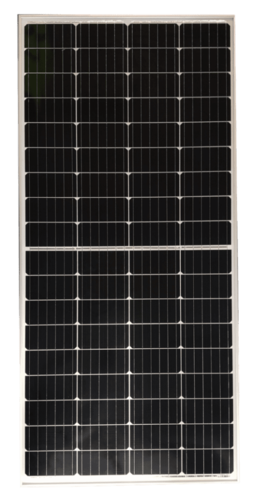
Passivated Emitter Rear Cell (PERC)
PERC solar panels are based on a monocrystalline cell and feature a specialized rear surface design to improve efficiency.
By "passivating" the rear surface, PERC panels can achieve higher efficiencies compared to standard monocrystalline solar panels, as the technology used increases light absorption, improves energy conversion and reduces solar panel operating temperatures by reflecting wavelengths of light that silicon wafers are unable to absorb.
Efficiency
PERC panels are an advancement in solar technology that can further improve efficiency. They typically have efficiency ratings comparable to monocrystalline panels or slightly higher, with some PERC panels reaching efficiencies of up to 23%.
Cost
PERC panels may have a slightly higher upfront cost compared to traditional monocrystalline panels due to their advanced design and manufacturing process. However, the increased efficiency can lead to higher energy production and savings over time.
Durability and Longevity
PERC panels offer similar durability and longevity to traditional monocrystalline panels. The passivated emitter and rear cell design help to enhance performance and maintain panel efficiency over the panel's lifespan.
Performance in Shading and Partial Shading
PERC panels may offer slightly better performance in shading conditions compared to traditional monocrystalline panels due to their enhanced efficiency. The passivated rear cell design helps to mitigate the effects of shading, resulting in more consistent energy production.
Looks
PERC panels have a similar appearance to traditional monocrystalline panels and may not offer significant aesthetic differences. Both types of panels provide a clean and modern look for solar installations.
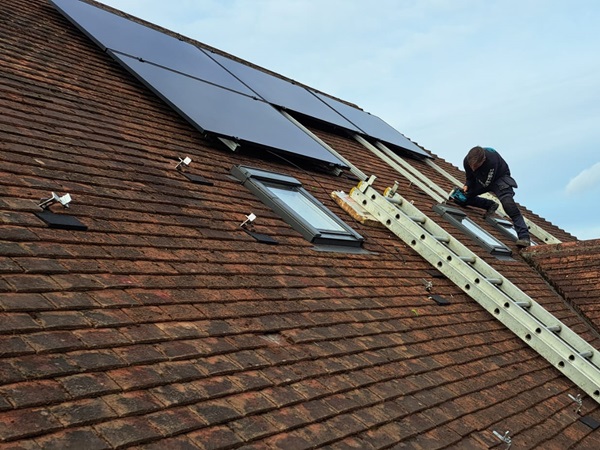
On-Roof Solar Panels
On-roof solar panels are mounted atop existing roof surfaces, offering a cost-effective solution for solar energy generation while providing good performance and, when used in combination with modern mounting systems, minimal aesthetic impact.
Efficiency
On-roof solar panels are typically mounted on top of the existing roof surface using racks or mounting systems. They do not directly integrate with the roof structure, which leaves a gap behind the panels that aids airflow, cooling of the panels during hot weather and improving efficiency.
Cost
On-roof solar installations are generally less expensive compared to in-roof installations because they require fewer modifications to the existing roof structure. The cost savings come from reduced labor and materials associated with integrating the panels into the roof.
Durability and Longevity
On-roof solar panels are subject to the same environmental factors as the rest of the roof, including exposure to weather, UV radiation, and potential damage from debris or falling objects. However, they can benefit from proper installation and maintenance to ensure long-term durability.
Performance in Shading and Partial Shading
On-roof solar panels may experience shading from roof features such as chimneys, vents, or dormers, which can reduce overall system performance, although proper panel placement and tilt optimization can minimize shading effects.
Looks
On-roof solar panels are mounted above the existing roof surface, which can result in a more noticeable appearance, especially from street level. However, modern mounting systems and sleek panel designs can minimize aesthetic impact.
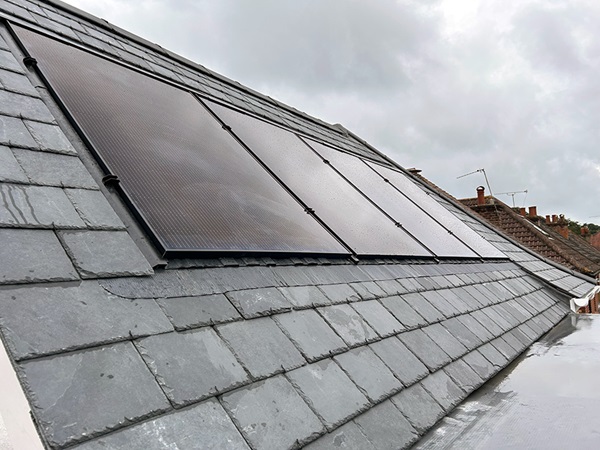
In-Roof Solar Panels
In-roof, or integrated solar panels are designed to seamlessly blend with the roof, enhancing the overall aesthetics of the building while providing efficient solar energy generation.
They are an ideal choice for new builds and for re-roofing projects.
Efficiency
In-roof solar panels are integrated flush with the roof surface and, although in-roof mounting systems are designed to have airflow, in-roof panels are generally not cooled by the air as much as on-roof systems are, which can lead to a slight drop in efficiency during periods of warmer weather.
Cost
In-roof solar installations typically involve more extensive construction work, including roof modifications and specialized mounting systems. As a result, they tend to be more expensive upfront compared to on-roof installations.
Durability and Longevity
In-roof solar panels are integrated into the roof structure, providing additional protection from the elements and potentially improving their longevity. Proper installation is crucial to ensure watertight seals and structural integrity.
Performance in Shading and Partial Shading
In-roof solar panels are integrated directly into the roof structure during construction or roof replacement. Integration design can help optimize panel placement and minimize shading, potentially leading to slightly higher performance compared to on-roof installations.
Looks
In-roof solar panels are integrated seamlessly into the roof structure, providing a sleek and uniform appearance that blends with the overall roof design. This integration can enhance curb appeal and architectural aesthetics.
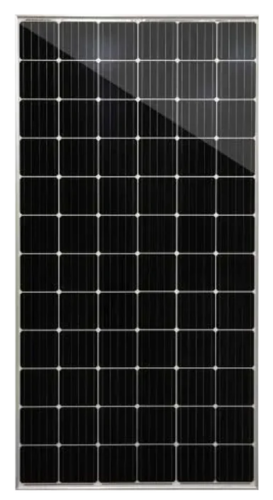
White-Backed Solar Panels
Solar panels are available in different colours but in this section we are concentrating on the backing colour, as this can have a slight impact on cost, efficiency and aesthetics.
White-backed panels may offer potential efficiency benefits over black-backed panels in warmer conditions and provide a clean, modern aesthetic.
They're ideally suited for lighter coloured roofing materials, such as metal roofs and lighter tiles, and are often the choice for commercial installations.
Efficiency
White-backed solar panels typically reflect more sunlight compared to black-backed panels, which can help to keep the panels cooler and potentially improve efficiency, especially in hot climates.
Cost
White-backed solar panels may be slightly cheaper as they tend to have plain aluminium frames, rather than painted aluminium frames that can be found on black-backed solar panels.
Durability and Longevity
White-backed solar panels may be more prone to discolouration over time due to exposure to environmental factors such as dirt, dust, and pollutants. However, proper maintenance can help to mitigate discolouration and preserve panel aesthetics.
Performance in Shading and Partial Shading
White-backed solar panels may reflect more light back onto adjacent solar cells, potentially improving performance in shading and partial shading conditions by maximising the available light and reducing the impact of shading.
Looks
White-backed solar panels offer a clean and modern aesthetic that can complement a variety of architectural styles. Their lighter colour may blend well with lighter-coloured roofing materials and provide a sleek appearance.
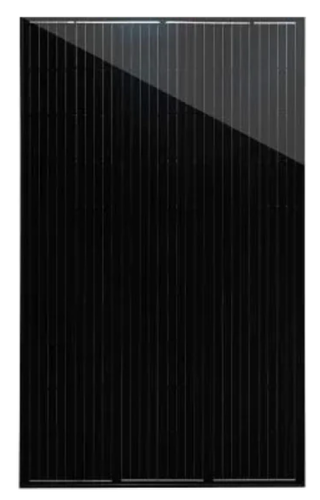
All Black Solar Panels
Solar panels that use a black backing sheet, rather than a white backing sheet, are generally considered more aesthetically pleasing, especially when combined with a "no wires" option and painted frames, giving a sleek "all black" appearance.
However, although the choice between the two depends mainly on aesthetic preferences, such as the existing roofing material colour, black solar panels may not perform quite as well in warmer conditions due to heat absorbtion.
Efficiency
Black-backed solar panels absorb more sunlight, which can increase panel temperature. While higher temperatures can reduce efficiency, some studies suggest that the impact on efficiency may be minimal, particularly with advancements in panel technology and cooling methods.
Cost
Black-backed solar panels can be slightly more expensive than white-backed, as they tend to have painted frames to enhance the looks of the panels and might also have hidden wires, to give them an "all-black" appearance.
Durability and Longevity
Black-backed solar panels are less likely to show visible signs of discoloration over time. Their darker colour may also help to mask minor imperfections, potentially enhancing long-term aesthetics.
Performance in Shading and Partial Shading
Black-backed solar panels absorb more sunlight without relfecting it back onto solar cells, but the difference in performance when compared to white-backed solar panels is negligible.
Looks
Black-backed solar panels have a darker, more discreet appearance that can blend seamlessly with darker roofing materials and be less conspicuous on the roof surface. "All-black" panels, where wires have been hidden and frames have been painted, are generally considered to be the most visually appealing option.

